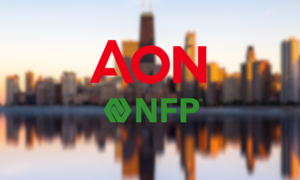Sustainability is one of the biggest challenges that we in the insurance industry are facing. To meet this challenge, carriers need to build strong ecosystems.
Many insurers have discovered the importance of digital ecosystems. They’re helping digital businesses thrive by linking them to a multitude of customers and partners. The network effect of digital ecosystems can generate exponential growth.
Sustainability ecosystems are also essential. They’re vital to the wellbeing of businesses and the many different communities they serve. They stretch beyond traditional value chains. They connect companies to customers, employees, shareholders, business partners, government agencies, and non-profit organizations.
Why are sustainability ecosystems essential? They’re essential because they provide companies with a network of partners to help them respond to the challenges of sustainability in the most effective way possible. Sustainability is such huge and complex issue that no organization should try to respond on their own. Partners are vital. At the heart of sustainability is the recognition that all of us–people, businesses and countries—are interconnected. We don’t live in isolation.
Sustainable insurers, as I mentioned in my previous blog post, put sustainability at the core of their business strategies. It guides all important decisions. Communications with policyholders, talks with employees, discussions with business partners, and the management of investment assets, for example, should reflect the company’s commitment to sustainability.
360-degree value is the foundation of successful sustainability ecosystems.
In sustainability ecosystems built around what our CEO Julie Sweet calls the principle of “360-degree value” all participants can gain value. But it’s important that each of them also upholds the values of the other ecosystem participants. Such an approach requires transparency and trust. It puts common values high on the check-list when selecting new partners. Do the companies you want to work with support your commitment to sustainability? If not, they’ll weaken your sustainability ecosystem.
Consumers, employees and regulators are increasingly pressing companies to change. They want companies to do more to counter threats such as climate change, environmental pollution, and poverty. Sustainability ecosystems can help carriers identify how best to respond to such demands. Insights from customers, employees, and businesses partners are likely to be invaluable.
Grass roots initiatives often flourish.
Several insurers have embarked on sustainability strategies that incorporate “grassroots” initiatives that address local needs.
The Z Zurich Foundation, a charity founded by Zurich Insurance, is working with several sustainability ecosystem partners in Bangladesh to help rural communities protect themselves from floods.
Aon in the UK has teamed up with poverty-relief organization Oxfam and insurtech Etherisc to develop a blockchain-based platform to provide insurance to small-scale farmers in Sri Lanka.
Allianz, through its Allianz World Run program, encourages its employees around the world to raise funds and support its partnership with SOS Children’s Villages, which provides education and training to young people in developing countries.
MetLife in the US is offering those of its employees who are licensed healthcare workers paid leave to help treat COVID-19 patients in nearby hospitals and clinics.
Sustainability ecosystems are crucial to the success of all these initiatives.
MAIF looks to members for sustainability direction.
French carrier MAIF has adopted a comprehensive “top-down” approach to developing its sustainability ecosystem. The mutual insurer has identified six aspects of its business where it can improve its commitment to sustainability and has asked its members to rank their importance. MAIF’s approach acknowledges the importance of the company’s members. It also recognizes that its members can provide the company with new perspectives on how to tackle the challenges of sustainability. The route taken by MAIF provides a useful framework for other insurers looking to strengthen their sustainability ecosystems. These are the initiatives it asked its members to rank:
Digital services: Deliver all products and services in digital format. Provide comprehensive education and support for users of digital offerings. Ensure robust security and governance across all digital channels.
Finance: No investments in companies or industries that do not respect biodiversity, human rights or the environment. Finance projects that make a positive impact on society or the environment. Support the local economy.
Internal practices: Combat money laundering, corruption and fraud. Improve the environmental impact of business infrastructure and operations. Promote shared transport and work-from-home among employees. Adopt responsible purchasing practices.
Management: Promote responsible tax policies that support local tax authorities. Maintain a mutual business model that furthers the interests of members rather than shareholders. Consider environmental and social performance, as well as financial criteria.
Employees: Build trust in working relationships with employees. Develop the skills and wellbeing of employees.
Society: Ensure that products and services are accessible to all potential customers. Provide consumers with clear and comprehensive information about the company’s offerings. Develop products that address climate change and associated risks.
Accenture has learned that a commitment to sustainability requires companies to set goals, develop a strategy, take action, gather data, measure performance, and hold leaders accountable. There are no short cuts. Too often companies declare their support for sustainability but don’t back this commitment with action that can be measured and assessed.
Source: Jean Francois Gasc, Accenture
Share this article:








